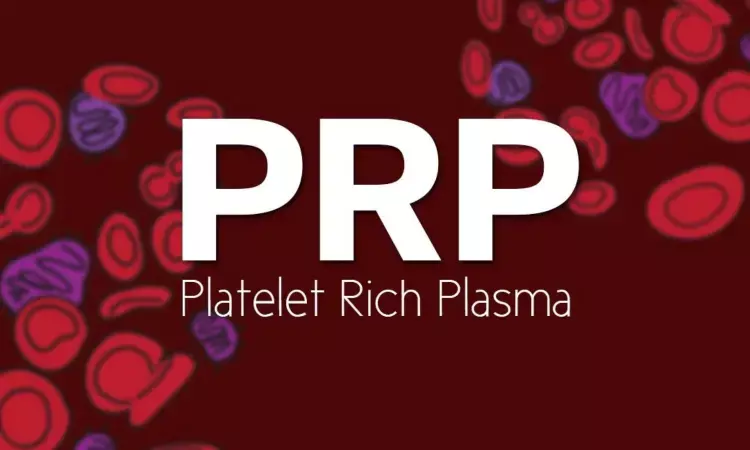- Home
- Medical news & Guidelines
- Anesthesiology
- Cardiology and CTVS
- Critical Care
- Dentistry
- Dermatology
- Diabetes and Endocrinology
- ENT
- Gastroenterology
- Medicine
- Nephrology
- Neurology
- Obstretics-Gynaecology
- Oncology
- Ophthalmology
- Orthopaedics
- Pediatrics-Neonatology
- Psychiatry
- Pulmonology
- Radiology
- Surgery
- Urology
- Laboratory Medicine
- Diet
- Nursing
- Paramedical
- Physiotherapy
- Health news
- Fact Check
- Bone Health Fact Check
- Brain Health Fact Check
- Cancer Related Fact Check
- Child Care Fact Check
- Dental and oral health fact check
- Diabetes and metabolic health fact check
- Diet and Nutrition Fact Check
- Eye and ENT Care Fact Check
- Fitness fact check
- Gut health fact check
- Heart health fact check
- Kidney health fact check
- Medical education fact check
- Men's health fact check
- Respiratory fact check
- Skin and hair care fact check
- Vaccine and Immunization fact check
- Women's health fact check
- AYUSH
- State News
- Andaman and Nicobar Islands
- Andhra Pradesh
- Arunachal Pradesh
- Assam
- Bihar
- Chandigarh
- Chattisgarh
- Dadra and Nagar Haveli
- Daman and Diu
- Delhi
- Goa
- Gujarat
- Haryana
- Himachal Pradesh
- Jammu & Kashmir
- Jharkhand
- Karnataka
- Kerala
- Ladakh
- Lakshadweep
- Madhya Pradesh
- Maharashtra
- Manipur
- Meghalaya
- Mizoram
- Nagaland
- Odisha
- Puducherry
- Punjab
- Rajasthan
- Sikkim
- Tamil Nadu
- Telangana
- Tripura
- Uttar Pradesh
- Uttrakhand
- West Bengal
- Medical Education
- Industry
Platelet-rich plasma improves biologic mesh incorporation in ventral hernia repair: Study

USA: Findings from a recent study suggest that platelet-rich plasma (PRP) reduces inflammation which may be useful for the incorporation of the acellular dermal matrix (ADM) in ventral hernia repair (VHR). Also, PRP decreases multinucleated giant cells in a dose-dependent manner. The study findings appear in the Journal of Tissue Engineering and Regenerative Medicine.
Previous studies have shown, PRP reduces inflammation and improves incorporation in VHR with ADM. Platelets concentration in PRP varies in clinical studies and an ideal concentration still needs to be defined. The effects of varying concentrations of PRP on ADM incorporation and inflammatory cell infiltration in a rat model of VHR. In a recent study, Raquel Araujo-Gutierrez, Department of Cardiovascular Science, Houston, Texas, USA, and colleagues hypothesized that increasing PRP concentration would improve incorporation, decrease CD8+ and multinucleated giant cell (MNGC) infiltrate.
Lewis rats underwent ventral hernia creation and repair 30 days later with porcine non-crosslinked ADM. PRP was applied to the mesh prior to skin closure at concentrations of 1x104plt/μl (PRP-LOW), 1x106plt/μl (PRP-MID), or 1x107plt/μl (PRP-HIGH) and tissue harvested at 2 and 4wks.
The researchers assessed tissue deposition, cellularization, and mesh thickness using H&E and Massons trichrome, and neovascularization with VVG staining, to establish the relationship of PRP concentration to metrics of incorporation. To establish the relationship of inflammatory cell infiltration in response to PRP concentration, MNGC, and CD8+ T-cell infiltration were quantified. Lymphocyte infiltration was assessed using immunohistochemical staining for CD8.
Key findings include:
- PRP-HIGH treated had significantly greater tissue deposition at 4 weeks.
- PRP-MID showed increasing mesh thickness at 2 weeks.
- Cell infiltration was significantly higher with PRP-HIGH at both 2 weeks and 4 weeks while PRP-LOW showed increased cell infiltration only at 4 weeks.
- At both time points there was a trend towards a dose-dependent response in cell infiltration to PRP concentration.
- Neovascularization was highest with MID-plt at 2 weeks, yet no significant differences were noted compared to controls.
- CD8+ cell infiltrate was significantly decreased at 2 weeks and 4 weeks in PRP-LOW and PRP-MID treated groups.
- PRP at all concentrations significantly decreased MNGC infiltration at 2 weeks while only PRP-HIGH and PRP-MID had significant reductions in MNGC at 4 weeks.
- Both MNGC and CD8+ cell infiltration demonstrated dose-dependent reduction in relation to PRP concentration.
- Increasing platelet concentrations of PRP correlated with improved incorporation, tissue deposition, and decreased scaffold degradation.
"These findings were associated with a blunted foreign body response," Araujo-Gutierrez and colleagues wrote. "These findings suggest PRP reduces inflammation which may be beneficial for ADM incorporation in VHR."
Reference:
doi: 10.1002/term.3247
Dr Kamal Kant Kohli-MBBS, DTCD- a chest specialist with more than 30 years of practice and a flair for writing clinical articles, Dr Kamal Kant Kohli joined Medical Dialogues as a Chief Editor of Medical News. Besides writing articles, as an editor, he proofreads and verifies all the medical content published on Medical Dialogues including those coming from journals, studies,medical conferences,guidelines etc. Email: drkohli@medicaldialogues.in. Contact no. 011-43720751


